Train a dog with a shock collar
While this may sound like an unattainable dream, with the right tools and techniques, it's easier to train a dog with a shock collar than you might think!
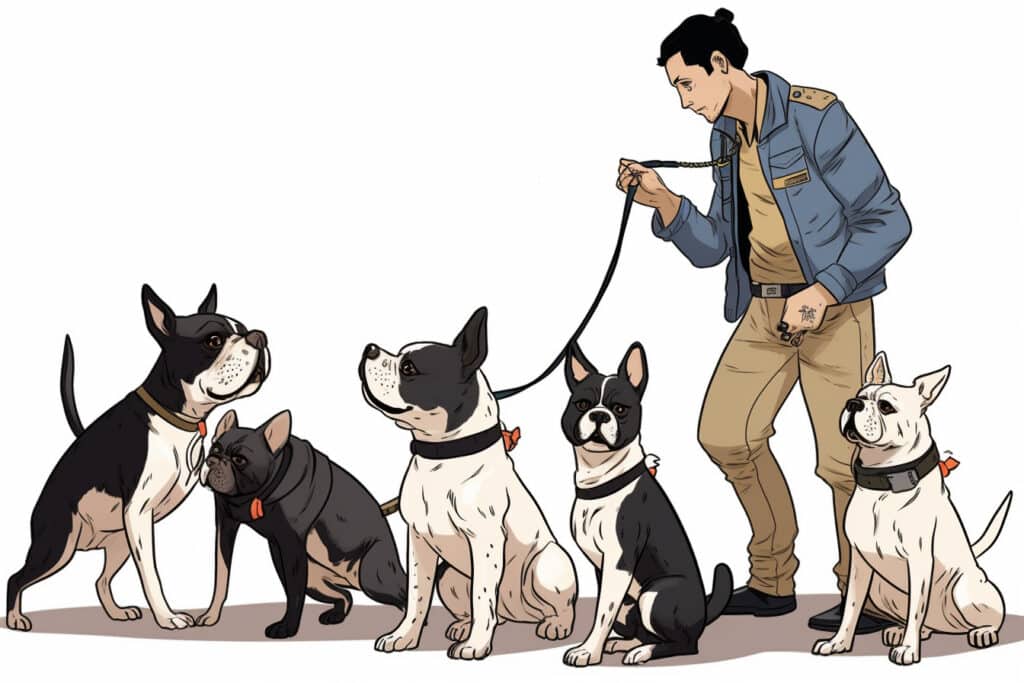
Picture this: a dog that leaps into action at the slightest command, with obedience and precision worthy of a military drill sergeant. A canine companion so well-trained that they could walk off leash through a parade of squirrels and not even bat an eye.
Now, before you get alarmed, let's clear up some misconceptions about shock collars. When used properly and responsibly by a knowledgeable owner or trainer, they can be an effective tool for teaching your dog boundaries and reinforcing desired behaviors.
The key is understanding how to use them correctly – as a gentle reminder rather than punishment – and always prioritizing positive reinforcement alongside their use. As someone who wants to give their best in serving others, including our four-legged friends, it's important to learn the appropriate ways to utilize these training aids for the betterment of your dog's overall behavior and safety.
Overview Of Shock Collars
As a dog owner, I understand that there's a lot of controversy surrounding the use of shock collars in dog training. However, it's essential to provide an overview of shock collars and their different types to help you make an informed decision regarding their use.
Dog training collars come in various forms, such as electric training collars, remote collars, bark collars, spray collars, and even electric fences. Each type serves a specific purpose, and the best shock collar for your situation will depend on your dog's size, temperament, and the particular behavior you're addressing.
When used correctly and under the guidance of a professional, these tools can be highly effective in correcting unwanted behaviors and reinforcing desired ones. It's vital to remember that these tools should never be used as punishment but rather to redirect your dog's attention towards the desired outcome.
As we continue discussing shock collars' use in training aggressive dogs, our focus will shift towards understanding how these devices work and how to utilize them effectively while prioritizing your dog's well-being.
Understanding How Shock Collars Work
As the saying goes, ‘knowledge is power,' and this certainly applies to understanding how shock collars work before incorporating them into your dog's training. An electronic collar is designed to deliver an electric shock to your dog when he engages in unwanted behavior, providing a form of negative reinforcement.

By gaining a clear understanding of the functionality and purpose of these collars, you'll be better equipped to use them effectively during a training session.
To begin with, a shock collar system comprises two main components: the electronic collar itself and a remote control that you, as the trainer or pet owner, will operate.
When your dog displays undesirable behavior, you can use the remote control to send an adjustable static shock as negative reinforcement. Your dog will then associate this discomfort with their inappropriate actions, discouraging them from repeating those behaviors in the future.
It's crucial to remember that timing and consistency are key factors for success when using this method; delivering shocks erratically or without proper context can confuse your dog and hinder progress.
Pros Of Using A Shock Collar
There are several pros of using a shock collar to train your dog, especially when dealing with aggressive behavior or other significant behavior problems. When used correctly and with proper training, a remote training collar can be an effective tool for obedience training and curbing undesirable behaviors.
It can provide quick corrections, allowing you to communicate more efficiently with your dog than through positive reinforcement training alone. In fact, many professional trainers incorporate the use of a shock collar in their programs to achieve quicker results and a higher level of control.
One of the main advantages of utilizing a shock collar is that it provides instant feedback to your dog, helping them understand which behaviors are not acceptable. As long as you use the static shock feature responsibly and combine it with positive reinforcement techniques, your dog can learn to associate good behavior with rewards and bad behavior with unpleasant consequences.
This balance between positive and negative reinforcement will help create a strong foundation for long-lasting obedience training. The remote control feature also allows you to correct unwanted behaviors from a distance without having to physically intervene—a benefit that can be particularly helpful when dealing with dogs who may pose a risk to family members or other animals due to their aggressive tendencies.
So while there are some valid concerns regarding averse training methods like shock collars, they do have their place in certain situations when used responsibly by knowledgeable trainers. Now let's examine some potential drawbacks associated with the use of these devices in our next section about cons of using a shock collar.
Cons Of Using A Shock Collar
As the clouds of doubt gather over the horizon, it's crucial to weigh the cons of using a shock collar before you make any decisions.
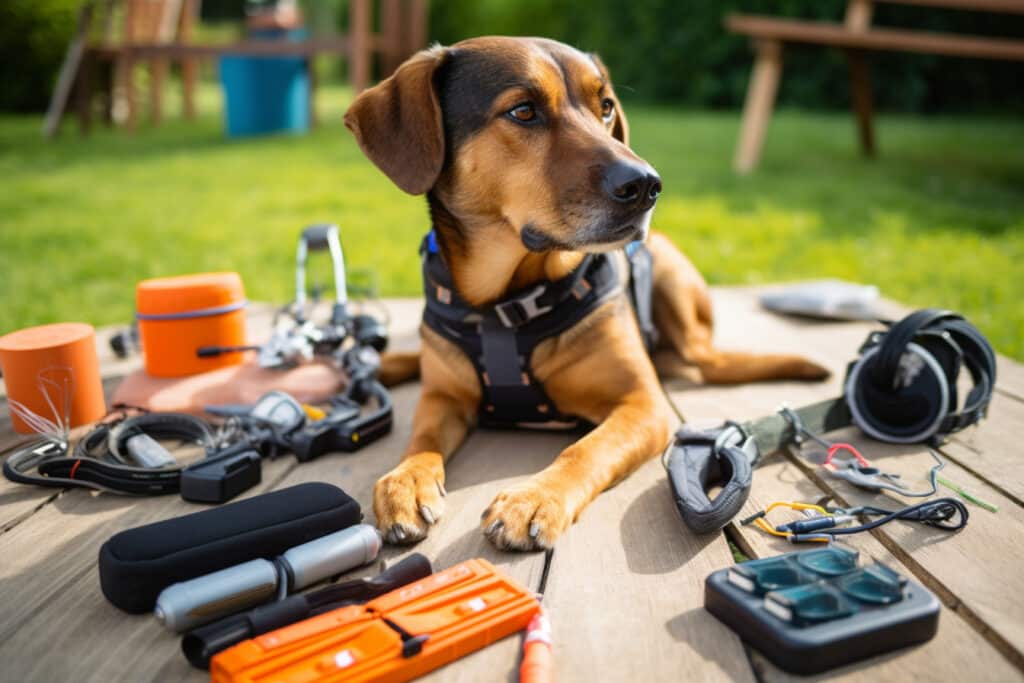
While shock collars may promise quick results in curbing unwanted behavior, they can also have a dark underbelly that even professional dog trainers are wary of. Like a double-edged sword that cuts both ways, averse training methods such as shock collars can sometimes exacerbate a dog's aggression or create undesirable behavior patterns.
It’s important to recognize the potential pitfalls of e-collar use. One major concern is that your furry friend might associate the pain from the shock with something else in their environment, leading to confusion and fear. Additionally, relying on pain-based methods can damage the bond between you and your canine companion, straining the very foundation of trust and mutual respect.
Although using a shock collar may initially seem like an efficient way to correct unwanted behavior, it's essential to consider alternative approaches that foster a positive relationship between you and your beloved pet. So let us now embark on this enlightening journey towards understanding these alternatives for better training outcomes.
Alternatives To Shock Collars
Despite the widespread use of shock collars, there are several viable alternatives to shock collars that can still help you effectively train your dog without causing them unnecessary stress or pain.
By understanding that dogs learn best through positive reinforcement and reward-based training methods, you can choose a more compassionate and effective approach to achieve desired behavioral changes in your canine companion.
Clicker training, for example, is a highly successful method of reinforcing positive behavior by marking the exact moment your dog performs the desired action with a click sound and rewarding them with a treat.
Instead of relying on choke chains or prong collars, consider using head halters or front-clip harnesses to manage pulling during walks. These devices give you better control over your dog's movements without causing discomfort or injury.
For addressing aggression issues, it is best practice to consult with a certified dog trainer who specializes in behavior modification and can provide guidance on how to work with your pet safely and effectively.
Keep in mind that patience, consistency, and communication are key factors in successfully training any dog – regardless of which method you choose.
Selecting The Right Shock Collar
When it comes time to train a dog with a shock collar, choosing the appropriate tool is essential in ensuring success and promoting good behavior. The use of shock collars can be controversial, but when utilized properly as a last resort, they can help address your dog's aggression or other behavioral issues.
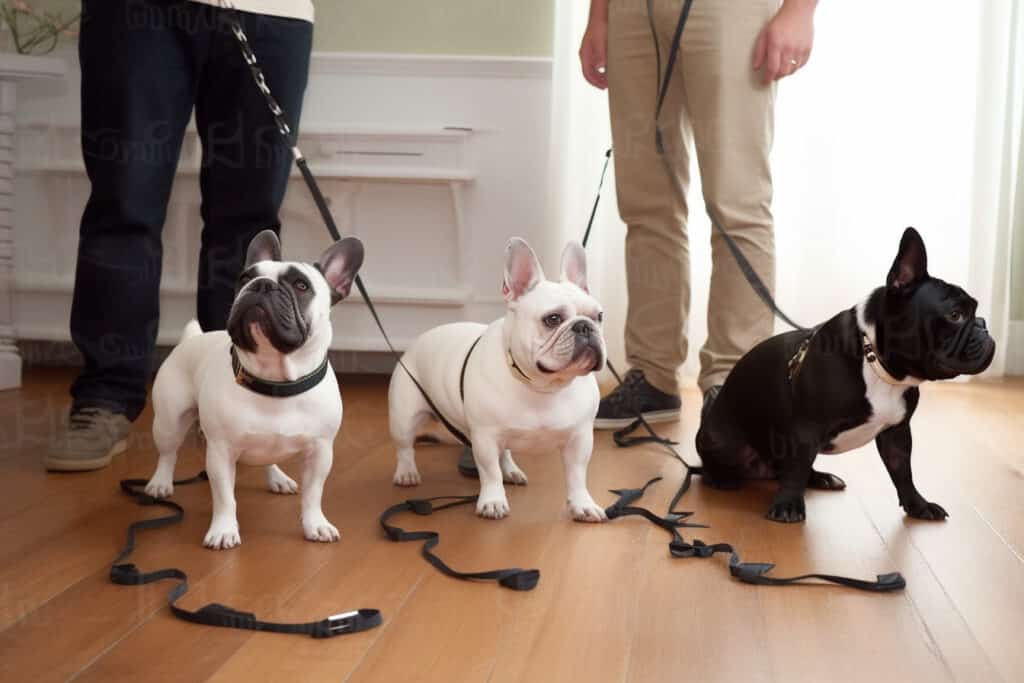
In our quest for the ideal training tool, let us explore e-collar technologies and features that will best suit your dog's needs. Firstly, consider the size and weight of your furry friend; not all collars are designed for every breed or size.
Next, look into adjustable stimulation levels to allow flexibility in training intensity based on your dog’s behavior and temperament. Additionally, opt for a collar with a range suitable for your training environment – whether it be indoors or outdoors – to ensure effective communication between you and your pet.
Lastly, prioritize safety features such as automatic shut-off mechanisms or built-in timeouts to prevent excessive stimulation. With these factors in mind, you'll be well on your way to finding the most fitting shock collar to assist in molding your dog's good behavior while mitigating any unwarranted aggression.
Preparing To Use A Shock Collar
Before you start using a shock collar, it's essential to understand that this training method should only be used as a last resort, especially for aggressive dogs. Many dog owners have successfully trained their pets using positive reinforcement methods such as clicker training, which focus on rewarding good behavior instead of punishing unwanted actions.
However, if your dog's aggressive behavior is proving difficult to manage or poses a danger to others, a shock collar can be an effective tool for gaining your dog's attention and correcting unwanted behaviors. It's crucial to approach the use of averse stimuli with caution and care; remember that our ultimate goal is to serve our dog's best interests and ensure their well-being.
When preparing to use a shock collar, there are several factors you need to consider:
-Select the right shock collar: Choose one designed specifically for your dog’s size, breed, and temperament. The best shock collars will offer multiple levels of stimulation so you can find the level that effectively captures your dog's attention without causing undue distress.
-Properly fit the collar: The shock collar should be snug but not too tight around your dog’s neck – ideally, you should be able to fit two fingers between the collar and your dog's skin. Incorrect placement or a poorly fitted collar may cause discomfort or fail to deliver effective averse stimuli.
– Gradually introduce the collar: Allow your dog to wear the deactivated shock collar for short periods before beginning any training sessions. This will help them acclimate to the feel of the device on their neck and reduce anxiety once training begins.
With these considerations in mind, you'll be better prepared to embark on a journey toward curbing your dog's aggressive behavior using a shock collar. In the next section, we'll delve deeper into how you can effectively train with this powerful tool while maintaining a strong bond with your beloved pet.
Training With A Shock Collar
As you embark on the journey of using a shock collar as a last resort for training your dog, it's important to remember that success depends on proper usage. According to a study conducted by the Department of Veterinary Medicine at the University of Bristol, 63% of dogs showed improvements in obedience when e-collars were used by professional trainers.
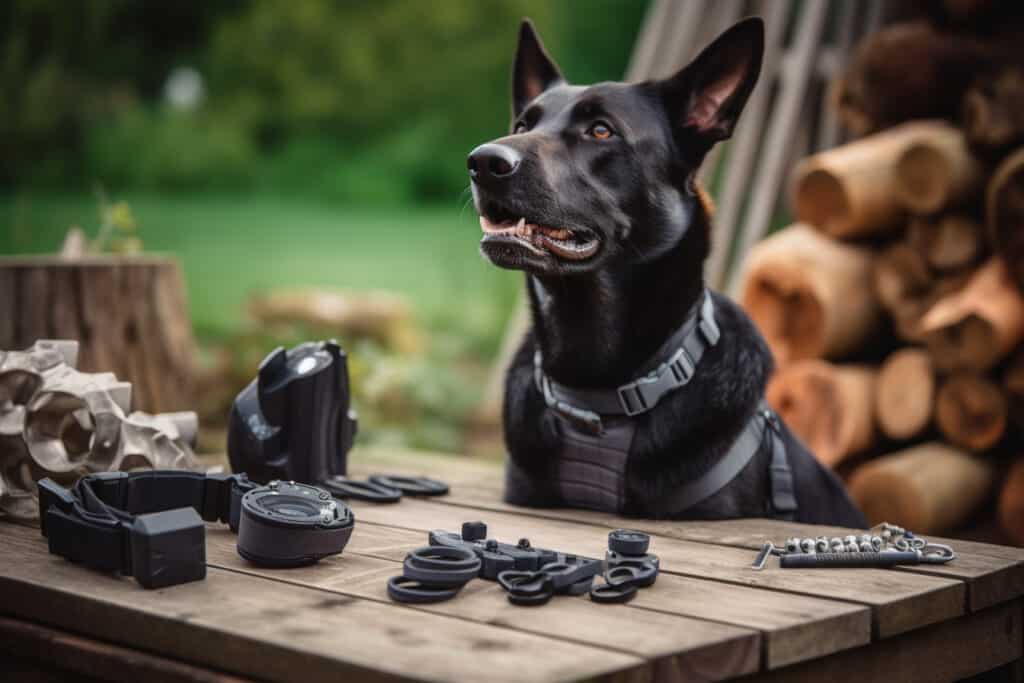
However, it is crucial to know how to properly train a dog with a shock collar to achieve these results and prevent causing any harm or stress to your furry friend.
To begin, ensure that the collar is fitted correctly on your dog's neck – not too tight but snug enough so that the electric signal can be felt. The key is to use the shock feature sparingly and combine its use with positive reinforcement techniques such as clicker training or reward-based training.
Pet owners should first try using only the collar's beep or vibration mode before resorting to electric stimulation. This helps in gaining your dog's attention without causing any aggressive responses. Remember, even professional trainers emphasize that e-collars should be used as a means of communication rather than punishment.
When used correctly and responsibly, electric training collars can facilitate open communication between you and your dog, helping them understand which behaviors are acceptable and which are not. As you progress through this type of training experience, pay close attention to understanding your dog's reactions and adjusting your approach accordingly.
Understanding Your Dog's Reactions
Understanding your dog's reactions during training is crucial to achieve the desired results and ensure their well-being. When using a shock collar, it's essential to pay close attention to your dog's body language and heart rate.
A dog may exhibit aggression as a response to averse stimuli, such as the shock from the collar. One of the primary goals when addressing behavioral problems is to reduce dog aggression and promote positive behaviours instead. To do this effectively, you must be able to recognize the signs of distress or discomfort in your dog, such as excessive panting, whining, or attempts to escape.
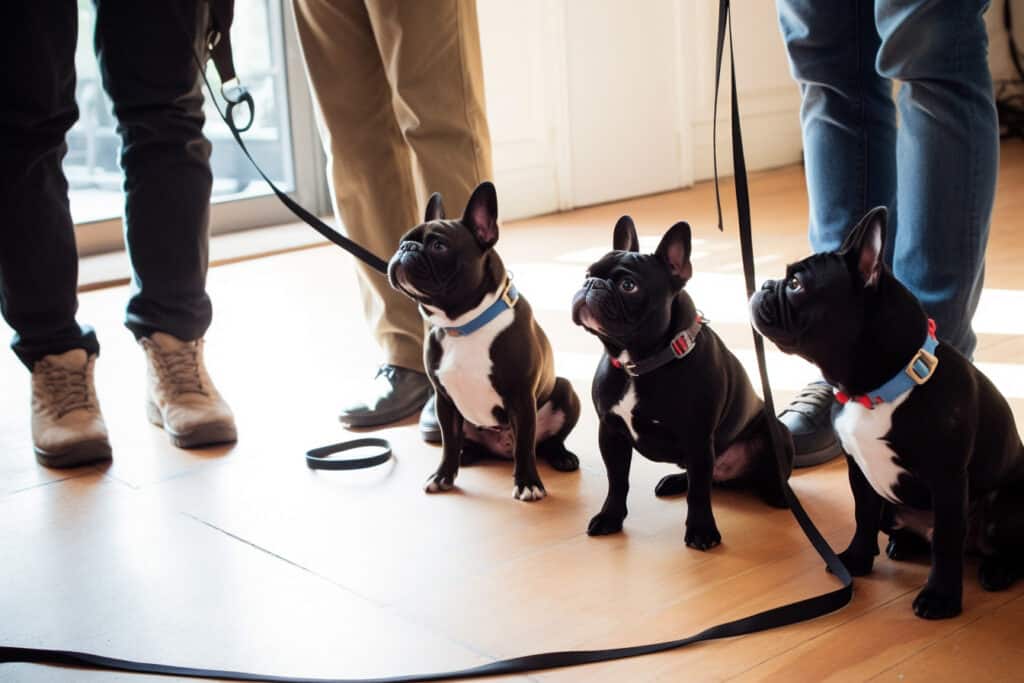
When you train a dog with a shock collar, always start with the lowest shock level possible and gradually increase it if needed until you find an intensity that captures your dog's attention without causing unnecessary distress. Monitoring your dog's reactions closely will help you determine the appropriate level for them while minimizing negative side effects on their emotional state.
Remember that a shock collar should be used only as a last resort after trying other positive reinforcement methods like clicker training or rewards-based programs. By understanding your dog's aggressive behavior and how they respond to different stimuli, you can make informed decisions about whether or not using a shock collar is suitable for your specific situation.
Preventing Misuse Of Shock Collars
Preventing misuse of shock collars is crucial for the well-being of your furry companion. As a dog owner myself, I must emphasize that using a shock collar should always be approached with great care and as a last resort.
Before considering a shock collar, try other methods like reward-based training, using obedience commands or even a vibration collar to train your dog. For instance, if you're wondering how to train a dog with a shock collar to stop jumping, first consider teaching them an alternative behavior like sitting or laying down on command.
If you're dealing with aggression issues or looking for how to use a shock collar to stop bad behavior, consult with an experienced professional who can guide you through the process safely and effectively.
To prevent misuse of shock collars and ensure the best training results, it's essential to monitor your dog's reactions closely while using one.
By following these guidelines and working closely with your canine companion, you'll not only establish trust but also foster a strong bond between both of you. As we move forward in our discussion about electric training collars, let's delve into monitoring your dog's progress throughout this process and ensuring success for both handler and pet alike.
Monitoring Your Dog's Progress
Monitoring your dog's progress is an essential part of training, especially when using a shock collar. The mini educator provides various shock functions that allow you to tailor the training experience to your dog's unique personality and response patterns.
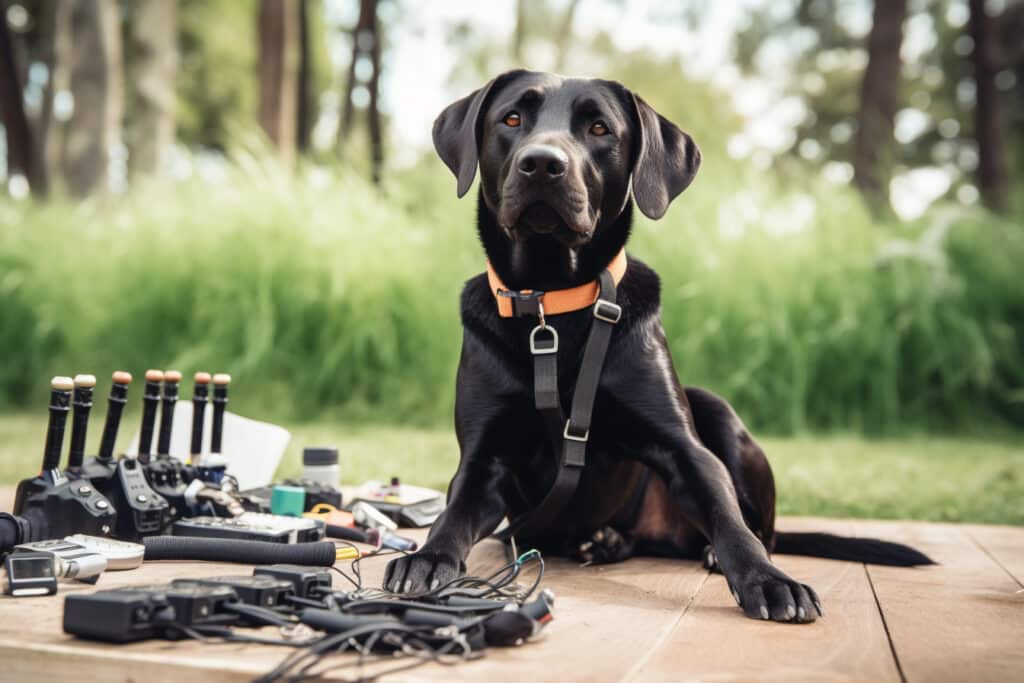
Keep a close eye on their reactions and adjust as needed, always prioritizing their well-being over immediate obedience results.
To effectively monitor your dog's progress during training with a shock collar, consider incorporating these methods:
– **Control Group**: Create a baseline of your dog's behavior without any interventions for comparison.
– **Training Groups**: Alternate between shock collar sessions and positive reinforcement sessions; observe if there are consistent improvements or differences between them.
– **Canine Aggression**: Monitor if aggression levels have increased or decreased after implementing shock collar training.
– **Behavior Changes**: Note any shifts in overall demeanor or specific responses to certain stimuli or situations.
– **Progress Logs**: Maintain documentation of achievements, setbacks, adjustments made, and lessons learned throughout the process.
As you continue to train your dog with a shock collar while monitoring their progress, remember that it is crucial to balance discipline with compassion. When done correctly and safely, this method can lead to lasting positive results in reducing unwanted behaviors and promoting obedience.
Safety Considerations For Shock Collar Training
As a responsible dog owner, it's crucial to be aware of the safety considerations when using shock collar training. While e-collars have proven to be effective in addressing certain behavior problems, there are potential risks associated with their use.
The American Veterinary Society of Animal Behavior cautions against the use of physical force and punishment-based training methods, such as shock collars, due to potential side effects like increased fear, anxiety, and aggression in dogs.
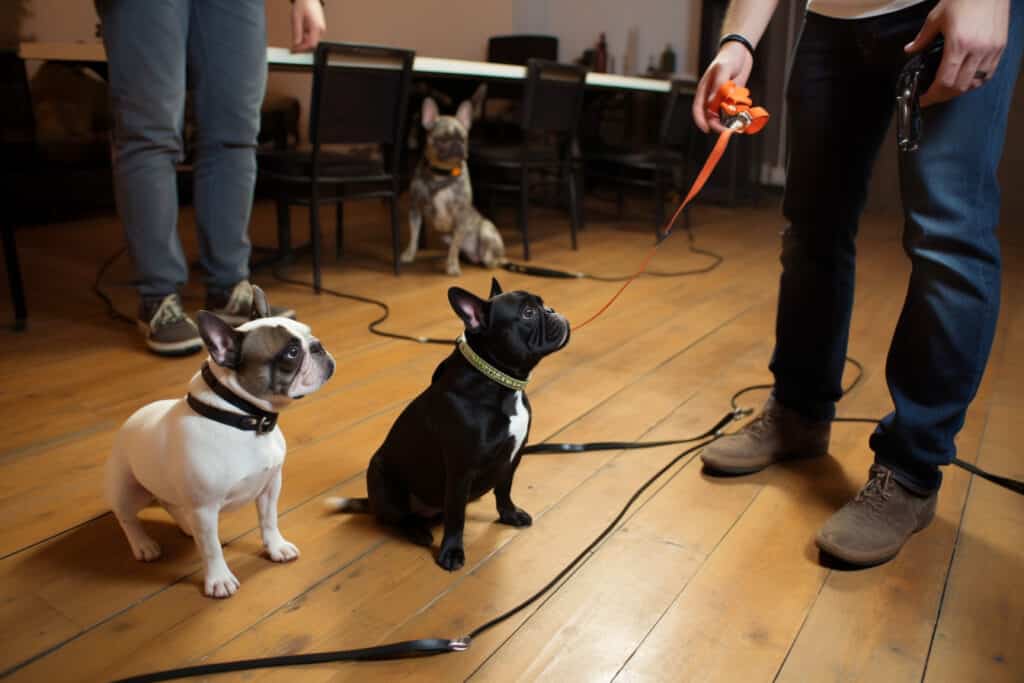
Therefore, before starting any shock collar training program, you must ensure that you are well-versed with your dog's body language and stress signals to prevent any unintended consequences.
To effectively train your dog while prioritizing their welfare, it is essential to closely monitor their behavior and cortisol levels during the training process. Cortisol is a hormone released by dogs under stress or duress. By keeping an eye on these indicators and adjusting the intensity or frequency of shocks accordingly, you can minimize distress while still achieving desired results from shock collar training.
Additionally, seeking guidance from certified dog trainers who specialize in e-collar technologies can help ensure that you are implementing safe practices that promote positive behavior change without causing undue harm to your four-legged friend.
Remember, a happy and healthy dog will always lead to a more fulfilling relationship between both you and your canine companion.
Rounding up; shock collars can be an effective training tool when used correctly and responsibly. However, it's crucial to weigh the pros and cons before deciding if this method is suitable for your dog.
Remember, ‘you can catch more flies with honey than vinegar'; positive reinforcement methods should always be your first choice in training. As a dog owner, lover and champion of their welfare, I encourage you to closely observe your dog's reactions during training sessions to ensure their well being.
Be open to alternative methods if you find that the shock collar isn't working or causing undue stress on your furry friend. After all, our main goal is to foster a strong bond and mutual understanding between you and your dog.
Lastly, always prioritize safety when using a shock collar. This includes preventing misuse by familiarizing yourself with its functions and limitations, as well as monitoring your dog's progress throughout the training process. By taking these precautions, you can ensure that both you and your canine companion have a positive and successful training experience together.



